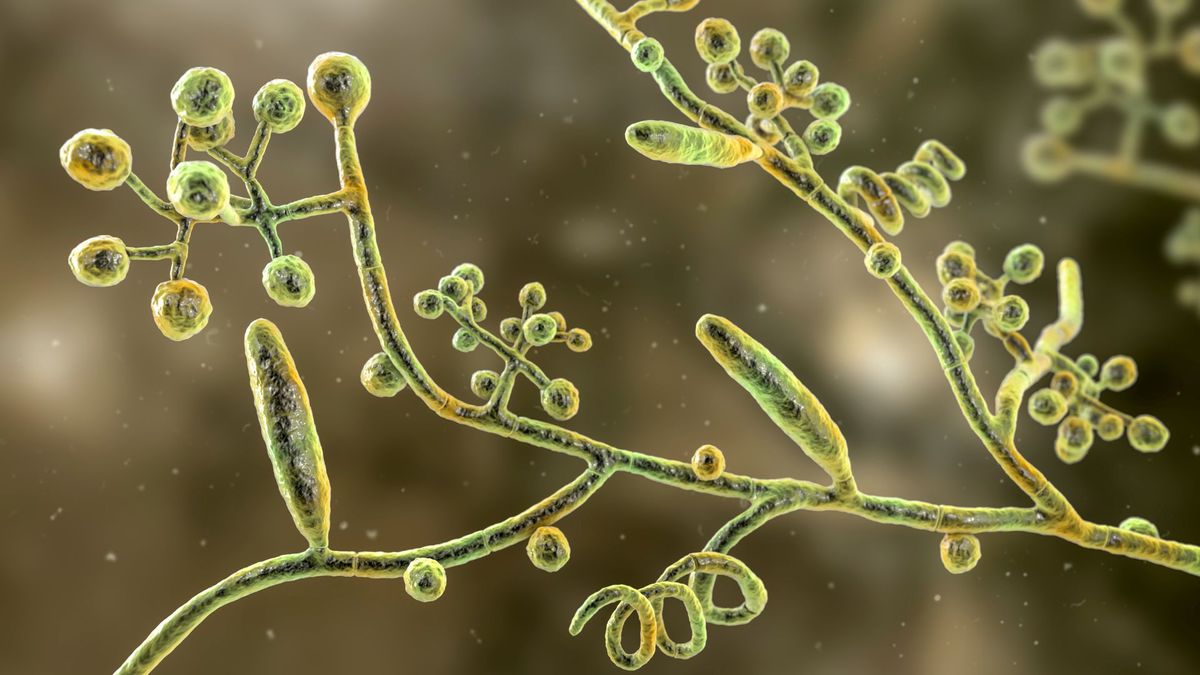A highly contagious form of ringworm that can spread via sexual contact has been spotted in the U.S. for the first time.
Ringworm, also known as tinea, is a skin infection caused by a variety of fungi. In this case, a fungus called Trichophyton mentagrophytes type VII (TMVII) is the culprit. It’s previously been documented in Southeast Asia and in Europe. For example, in 2023, Paris-based doctors published a case series of 13 infections documented among men in the city. Those recent cases took place among men who have sex with men, hinting that the fungus might currently be circulating within that demographic, although anyone can develop the infection.
Now, in a paper published Wednesday (June 5) in JAMA Dermatology, doctors in New York City have reported what they believe to be the first U.S. case of the infection.
The man, in his 30s, had developed scaly, red patches around his groin, genitals and buttocks, as well as his legs, arms and back. He had just returned to New York after traveling to England, Greece and California when the rashes appeared. He told doctors he’d had multiple male sexual partners while traveling, although none had similar rashes.
Related: Mpox cases are far outpacing last year’s numbers, CDC reports
A skin biopsy from the man’s thigh confirmed he had ringworm, and he was prescribed an antifungal treatment. The infection still didn’t clear up after a month, so doctors took a sample of the fungus and found it to be TMVII. The man’s antifungal regimen was then adjusted, initially to one drug and then another as he steadily improved.
TMVII infections can take months to clear, even with medication, but the antifungal drug terbinafine seems to be particularly effective, the team reported. When TMVII is suspected or diagnosed, the sexual partners of the infected person should be evaluated and the patient should be screened for additional sexually transmitted infections, they added.
“Dermatologists in the U.S. should be aware of TMVII infections,” the doctors wrote in their report. “Prompt treatment may reduce the risk for scarring and transmission.” TMVII looks similar to typical ringworm, but it can be more inflammatory and thus cause abscesses and scarring if untreated.
To find more cases, doctors may need to ask direct questions of their patients, the clinicians said in a statement.
“Since patients are often reluctant to discuss genital problems, physicians need to directly ask about rashes around the groin and buttocks, especially for those who are sexually active, have recently traveled abroad, and report itchy areas elsewhere on the body,” senior study author Dr. John Zampella, an associate professor of dermatology at the NYU Grossman School of Medicine, said in a statement.
The doctors noted in their report that, using standard lab techniques, it’s difficult to differentiate TMVII from a very closely related fungus called T. interdigitale.
In addition, the skin rashes caused by TMVII look similar to those caused by T. indotineae. But unlike TMVII, T. indotineae is often resistant to the drug terbinafine.
In a recent study, published in May, NYU researchers probed the genetic quirks that enable the fungus to thwart terbinafine. They also found that a different antifungal, called itraconazole, works better, but it can interact with other medications and come with unwanted side effects like diarrhea.
T. indotineae was detected in the U.S. for the first time last year, although a retrospective analysis of patients’ skin samples suggests it’s been in the country longer. There’s some evidence that this infection can also spread via sexual contact.
The NYU team plans to continue tracking cases of TMVII and T. indotineae in the U.S. and internationally. They emphasized that, while both fungi have been detected in the U.S., their infection rates in the country are still very low.
This article is for informational purposes only and is not meant to offer medical advice.
Ever wonder why some people build muscle more easily than others or why freckles come out in the sun? Send us your questions about how the human body works to community@livescience.com with the subject line “Health Desk Q,” and you may see your question answered on the website!



)






